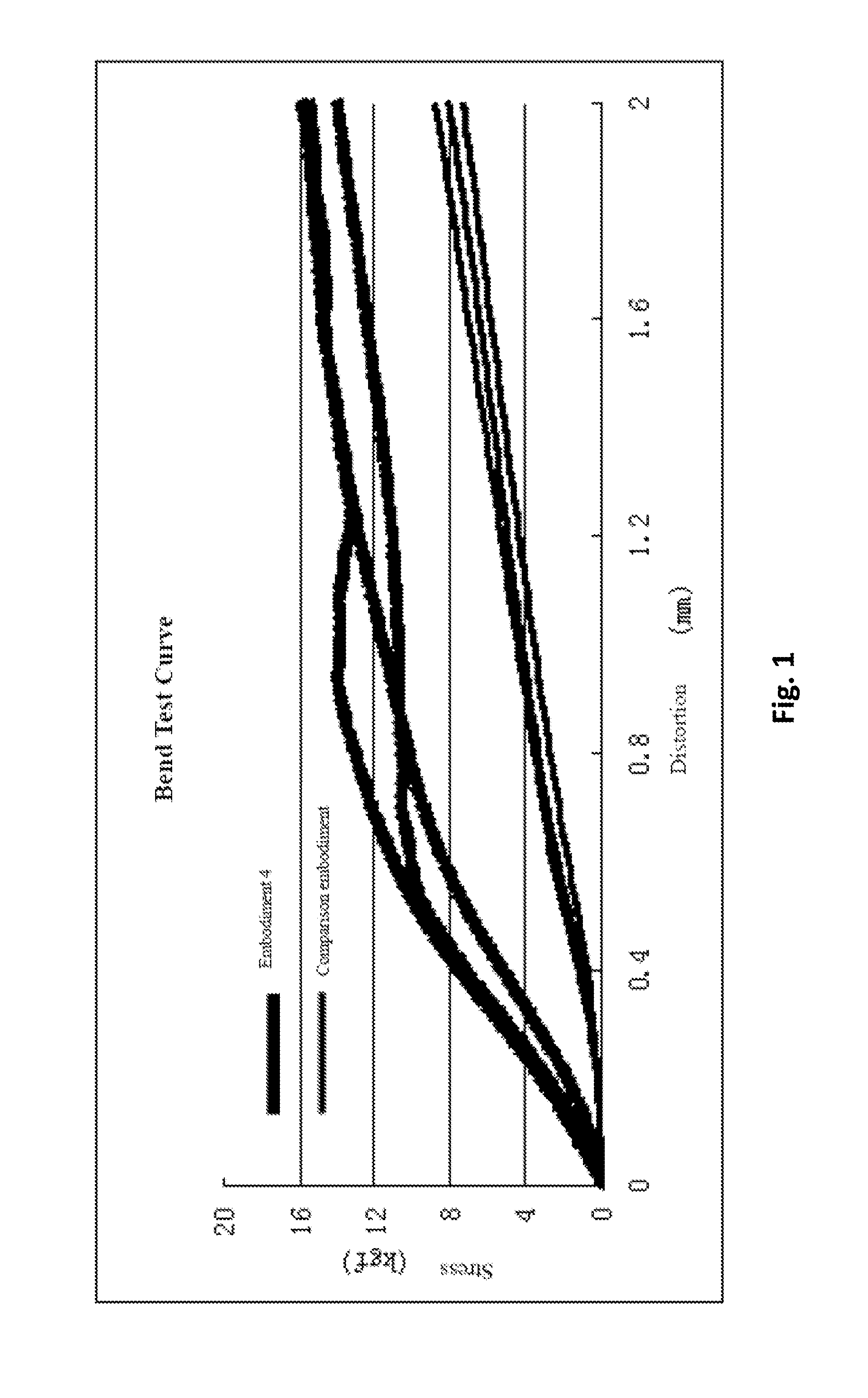Polymer li-ion battery and the separator thereof
a technology of li-ion batteries and separators, which is applied in the field of polymer li-ion batteries, can solve the problems of prone to damage of separators, potential safety hazards, and people's questioning the safety performance of li-ion batteries, and achieves the effects of reducing distortion, reducing safety hazards, and reducing the risk of damag
- Summary
- Abstract
- Description
- Claims
- Application Information
AI Technical Summary
Benefits of technology
Problems solved by technology
Method used
Image
Examples
embodiment 1
[0030]Preparation of the positive electrode:
[0031]Lithium cobaltate (a positive active material), superconductive carbon (a conductive additive, hereinafter to be referred as Super-P) and polyvinylidene fluoride (an adhesive, hereinafter to be referred as PVDF) are mixed uniformly by a mass ratio of 96:2.0:2.0 and made into slurry with a certain viscosity; the slurry is coated on a current collector aluminium foil, baked at a temperature of 85° C., cold pressed, side cut, sliced, stripped and then baked for 4 hours at a temperature of 85° C. under vacuum; then the anode tab is welded. In this way, the positive electrode of the Li-ion battery is manufactured.
[0032]Preparation of the negative electrode:
[0033]Graphite, superconductive carbon (a conductive additive, hereinafter to be referred as Super-P), sodium carboxymethylcellulose (a thickening agent, hereinafter to be referred as CMC) and styrene butadiene rubber (an adhesive agent, hereinafter to be referred as SBR) are mixed unif...
embodiment 2
[0050]Embodiment 2 is different from Embodiment 1 in preparation of the separator.
[0051]A 16 um-thick polypropylene microporous membrane is used as the porous substrate of the separator.
[0052]Manufacture instruction of inorganic matter coating slurry:
[0053]The inorganic slurry consists of: 35 shares of inorganic silica dioxide nanopowder subject to surface modification, 10 shares of butadiene-acrylonitrile polymer and 55 shares of dimethyl carbonate solvent.
[0054]Preparation process:
[0055]First, butadiene-acrylonitrile polymer and dimethyl carbonate (30 Kg in total) are put into the double planetary mixer with a capacity of 60 L for dispersing at a temperature 45° C. for 3 hours.
[0056]Second, 16.1 Kg silica dioxide nanopowder is put into the double planetary mixer for high-speed dispersion at a temperature 45° C. for 2 hours, and then is subject to a ball-milling processing by a nanometer grinder for 1.5 hours; ball-shaped Zirmil with a diameter of 6 um is used as the grinding mediu...
embodiment 3
[0066]Embodiment 3 is different from Embodiment 1 in preparation of the separator.
[0067]A 16 um-thick polyethylene microporous membrane is used as the porous substrate of the separator.
[0068]Manufacture instruction of inorganic matter coating slurry:
[0069]The inorganic slurry consists of: 40 shares of mixture of titanium dioxide nanopowder and barium titanate micron powder (by a mass ratio of 1:1), 8 shares of mixture of fluoride-hexafluoropropylene polymer and polyacrylonitrile (by a mass ratio of 1:2) and 52 shares of cyclohexanone solvent.
[0070]Preparation process:
[0071]First, the mixture of fluoride-hexafluoropropylene polymer and polyacrylonitrile as well as cyclohexanone solvent (30 Kg in total) are put into the double planetary mixer with a capacity of 60 L for dispersing at a temperature 45° C. for 3 hours.
[0072]Second, 20 Kg mixture of titanium dioxide nanopowder and barium titanate micron powder is put into the double planetary mixer for high-speed dispersion at a temperat...
PUM
| Property | Measurement | Unit |
|---|---|---|
| temperature | aaaaa | aaaaa |
| temperature | aaaaa | aaaaa |
| temperature | aaaaa | aaaaa |
Abstract
Description
Claims
Application Information
 Login to View More
Login to View More - R&D
- Intellectual Property
- Life Sciences
- Materials
- Tech Scout
- Unparalleled Data Quality
- Higher Quality Content
- 60% Fewer Hallucinations
Browse by: Latest US Patents, China's latest patents, Technical Efficacy Thesaurus, Application Domain, Technology Topic, Popular Technical Reports.
© 2025 PatSnap. All rights reserved.Legal|Privacy policy|Modern Slavery Act Transparency Statement|Sitemap|About US| Contact US: help@patsnap.com

